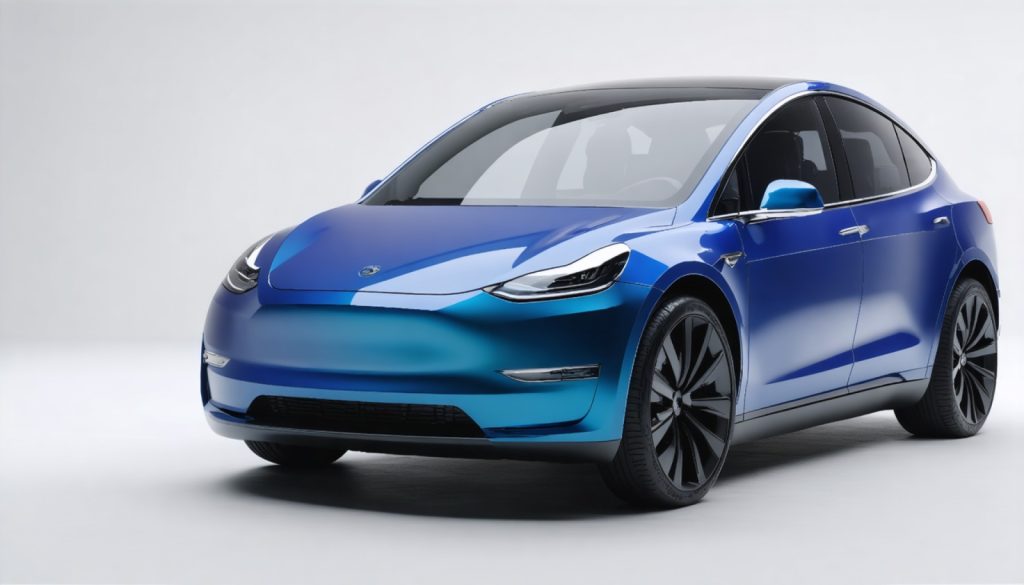
- Apple navigates complex global trade challenges amidst supply chain issues and political scrutiny.
- Senator Warren raises concerns about Apple’s relationship with the former Trump administration.
- Tech industry faces intense competition and innovation, with mixed earnings across companies.
- Alphabet Inc. reports a 12% revenue increase, highlighting its adaptability in the market.
- Elon Musk’s Neuralink explores advanced human-machine integration, while Tesla battles Cybertruck production hurdles.
- General Motors and Chinese firm CATL showcase advancements in electric vehicle technology.
- Analysts emphasize the urgent need for agility and foresight in navigating tech and trade dynamics.
- Understanding global supply chains and policies is crucial for comprehending market trends and product availability.
Apple, a titan of innovation, finds itself navigating a maze of challenges amid a teetering global trade environment. As whispers of “influence-peddling” arise in the corridors of power, Senator Elizabeth Warren’s concerns swirl over the alleged cozy ties between Apple and the Trump era’s White House. Under the relentless gaze of international trade negotiations, CEO Tim Cook must now balance not just sleek devices but complex diplomacy.
While Apple’s iPhone 17 series faces supply chain hiccups, echoing broader market tremors, the tech industry is a live wire of competition and innovation. The shimmering promises of breakthrough bleed into earnings across the board, with some companies weathering market storms better than others. Alphabet Inc. celebrated a 12% revenue surge, a growth testament to its mercurial adaptability, while a somber mood lingered over VinFast Auto, missing expectations as the company treads the precarious path of EV prominence.
Beyond the earnings desk, Elon Musk’s Neuralink dreams of blurring the lines between human and machine, poised with ambitions to restore sight to the blind. Yet, it’s Tesla’s reimagining of the Cybertruck that commands the public’s imagination, a canvas painted with a utilitarian brush amidst ongoing production challenges linked to global material shortages and policy shifts.
Meanwhile, the automotive landscape is a bustling tapestry. Chinese battery giant CATL strides confidently with its rapid-charge ‘Shenxing’ battery, signifying a leap towards sustainable mobility. Across the Atlantic, General Motors advances its Ultium-based vehicles from its Mexican plant, illustrating the integrated global heartbeat of the car industry.
Throughout these shifts, the intricate weave of tech and trade looms over Wall Street. Analysts like Dan Ives echo the sentiment of urgency—a ticking clock against which these industrial giants must act. The stakes are high, and the consequences ripple outwards, touching every sector. The overarching lesson? In the dance of innovation and commerce, agility and foresight are invaluable virtues.
In an intertwined world, where supply chains and policies shape the course of technological advancements, the prowess to navigate uncertainty defines not just survival, but triumph. As consumers and stakeholders, understanding these market forces equips us to better grasp not only the products we hold but the vast, unseen networks that bring them to life.
Apple’s Strategic Maneuvers Amid Global Trade Challenges: What You Need to Know
Navigating Global Trade for Tech Titans
In an era where global trade tensions ripple across industries, Apple, a frontrunner in tech innovation, faces significant challenges as it contends with international politics and supply chain disruptions. The juxtaposition of diplomatic negotiations and tech advancements paints a complex picture of today’s market landscape. Here’s what you need to know, and how these developments could impact you.
Key Developments and Market Challenges:
– Political Influence and Tech Giants:
Apple finds itself in the political spotlight as Senator Elizabeth Warren raises issues of potential influence-peddling with the Trump administration. This highlights the intricate balance between tech companies and governmental policies. For businesses, maintaining transparency and ethical influence in governmental affairs is crucial.
– Supply Chain Disruptions Impacting the iPhone 17:
The anticipated iPhone 17 line faces potential delays due to supply chain issues. With components sourced globally, Apple’s strategy must include diversifying suppliers and developing contingency plans to mitigate risks.
– Comparative Market Performance:
Alphabet Inc. shows resilience with a 12% revenue increase, emphasizing the importance of agility and diversification in business models. Conversely, companies like VinFast Auto face the challenge of aligning consumer expectations with operational capabilities.
– Innovation in Mobility:
As Tesla redefines vehicle aesthetics with innovations like the Cybertruck, challenges arise in actualizing these designs amidst material and regulatory constraints. Similarly, the Chinese battery producer CATL’s ‘Shenxing’ battery represents a leap toward rapid charging and sustainable energy solutions, reflecting a pivot towards eco-friendlier technologies.
– Automotive Industry’s Global Integration:
General Motors’ production of Ultium-based vehicles in Mexico signals the importance of strategic geographic manufacturing placements to optimize costs and expand market reach.
How-To Strategies for Navigating Market Shifts:
1. Diversify Supply Chains:
Companies should invest in alternative supplier networks to avoid bottlenecks. This flexibility can help navigate geopolitical and environmental challenges.
2. Invest in R&D and Adaptability:
Innovation-driven sectors must prioritize research and development to stay ahead. Creating adaptable business models that can pivot quickly in response to market changes is critical.
3. Align with Sustainable Practices:
As governments and consumers lean towards sustainability, investing in eco-friendly technologies and sustainable operations can offer long-term benefits and competitive advantages.
Pros and Cons Overview:
Pros:
– Strategic collaborations can open new markets and drive innovation.
– Investing in sustainable technologies can align companies with future regulatory standards and consumer preferences.
Cons:
– Dependence on global supply chains can lead to vulnerabilities during geopolitical unrest.
– Rapid changes in regulatory landscapes can impose unexpected financial and operational strains.
Industry Predictions:
– Continued Focus on Sustainability: Expect a greater emphasis on green technologies as regulatory pressures increase globally.
– Increased Connectivity: Innovations blending AI and IoT will transform how products are developed and used, necessitating a focus on cybersecurity and data privacy.
– Shifts in Labor Markets: Automation and tech evolution will redefine job roles, creating a demand for reskilling and education.
Quick Tips for Consumers and Stakeholders:
1. Stay Informed: Understanding market trends and innovations can offer you a strategic advantage in decision-making, whether investing or purchasing.
2. Value Transparency: Support companies prioritizing ethical practices and sustainability.
3. Leverage Technology: Use tech advancements to improve efficiency and productivity in personal and professional environments.
For more insights into technology and innovation, visit Apple or explore the latest trends in sustainable energy at Tesla and CATL.
Understanding the forces shaping tech and commerce equips you for the future. In a rapidly changing landscape, agility and foresight remain key to thriving amidst uncertainty.



